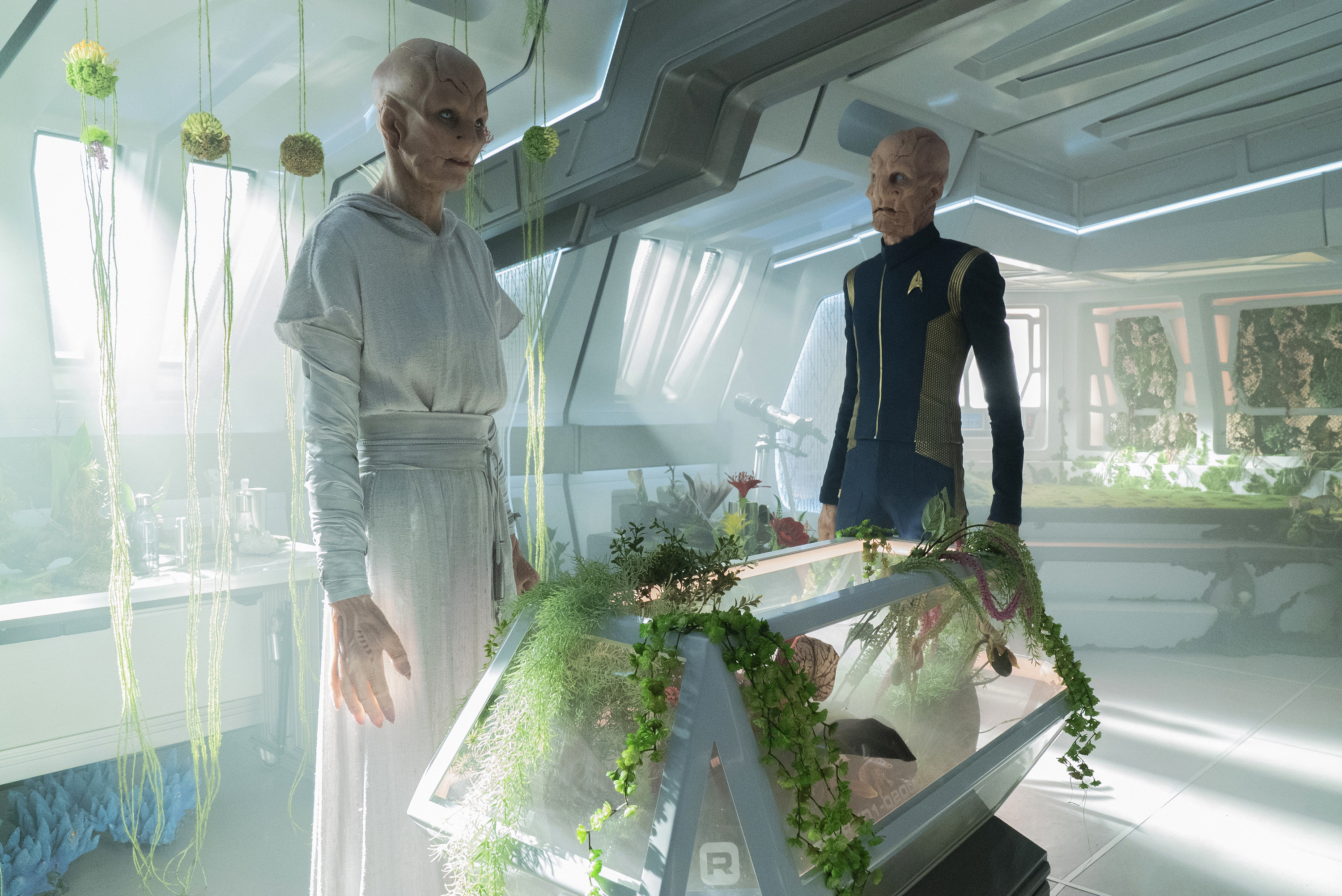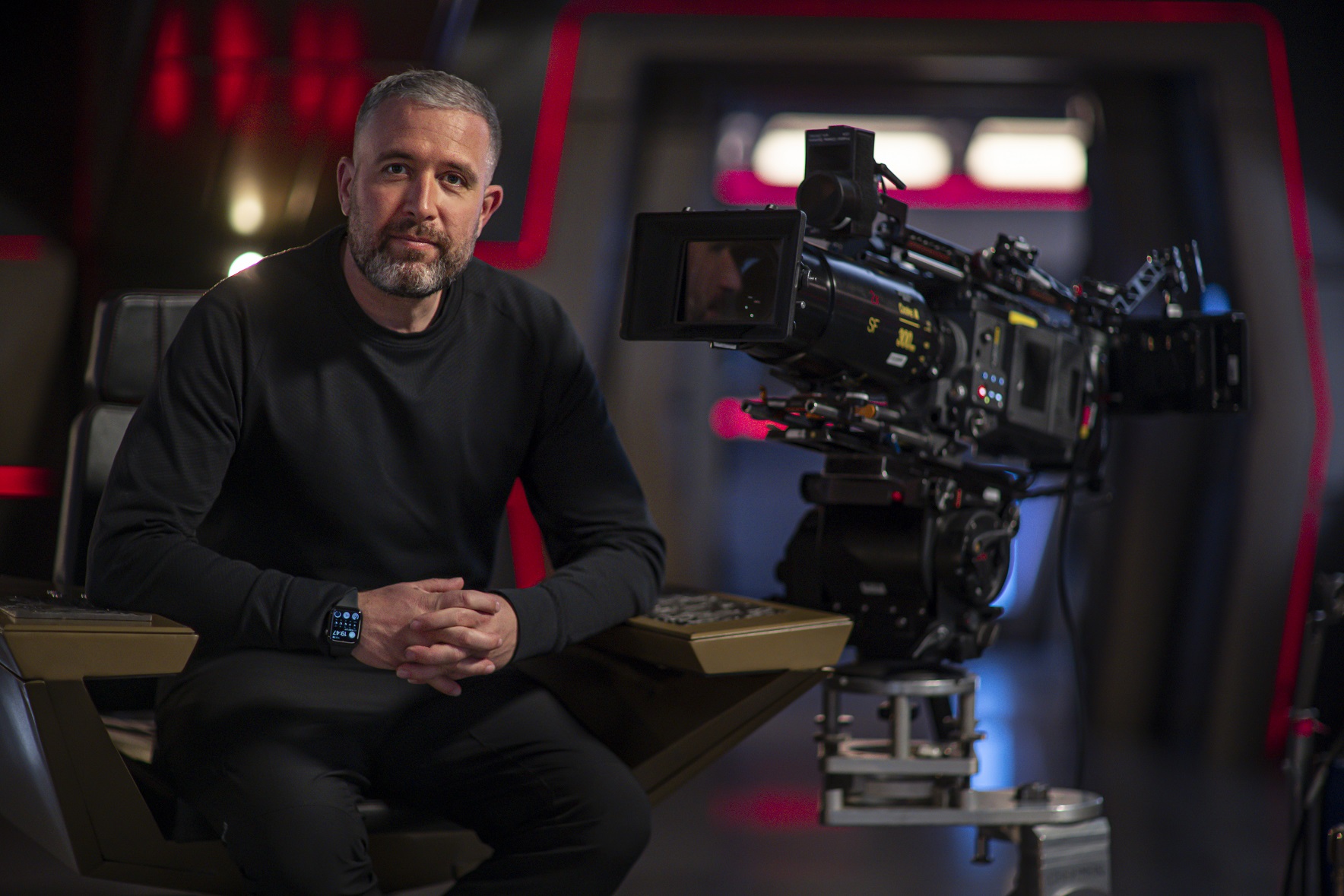‘Star Trek: Discovery’ DOP Goes Boldly Full Frame With Cooke Optics Lenses
Philip Lanyon is using the lenses to pull fans more deeply into the story

LEICESTER, U.K.—Director of Photography Philip Lanyon will bring “Star Trek: Discovery” fans further into the story than ever before in Season 4 by shooting in full frame with Cooke Optics 1.8x Anamorphic/i Full frame Plus SF (Special Flare coating) prime lenses.
The new lenses, which supplement the 2x Anamorphic/i SF lenses used since Season 2, can be intercut seamlessly with the existing lenses despite each having a different de-squeeze factor.
“I have a history with the ‘Star Trek’ franchise, and the Cooke Anamorphic/i 2x with the Special Flare coating from when I shot an episode of ‘Discovery’ during Season 2,” said Lanyon.
“I then went on to be the lead director of photography for ‘Star Trek: Picard’ with the Cooke Anamorphic/i Special Flare lenses. I love the Special Flare. They really give me a visual playground in which to convey different emotions through light, color and composition, which is perfect for both ‘Picard’ and ‘Discovery.’

“We are in so many interesting and unique environments, with strong lighting sources that interact organically with the glass. When a ship is near a star, or there are space gases or an alien planet, each present a unique flare that gives the environment an authenticity or feeling of being there. Plus, they give me the control to bring in more flare or take flare away just with a simple lighting change. That adds a lot to the ‘Star Trek’ universe.”
Lanyon, who served as Director of Photography along with Franco Tata and Chris Mably for the 13 episodes of “Star Trek: Discovery” Season 4, wanted to shoot in both Super 35 style with the Anamorphic/i 2x SF and add full frame format with the Anamorphic/i Full Frame Plus SF.

“Full frame has some distinct advantages, along with a cleaner image — it allows me to get closer to the subject with a wider field of view without the distortion of a wide-angle lens,” he said. “That allows viewers to feel more of the relationship between the subject and their environment in a close up — not only who or what they are, but where they are.”
Get the TV Tech Newsletter
The professional video industry's #1 source for news, trends and product and tech information. Sign up below.
Lanyon was the driving force behind using full frame for “Discovery” although the decision to introduce full frame was also somewhat technically driven. “’Discovery’ used virtual production environments in Season 4 and the large format can effectively give you softer backgrounds, which was important to control moiré and other artifacts you can get on a LED wall, but shooting in full frame is what I wanted for the look and feel of Season 4,” he said.
While “Discover”’ was the first “Star Trek” series to adopt the full frame format, it won’t be alone for long. “Star Trek: Strange New Worlds,” slated for release in 2022, also went with Cooke Anamorphic/i Full Frame Plus SF (as well as Anamorphic/i SF) independent of what Lanyon was doing on “Discovery.”
Season 4 was shot using ARRI ALEXA Mini, Mini LF, and SXT cameras and a large assortment of Cooke lenses. They included three complete sets of the Anamorphic/i 2x SF primes (25mm, 32mm, 40mm, 50mm, 65mm MACRO, 75mm, 100mm, 135mm, 180mm and 300mm) and one set of the Anamorphic/i Full Frame Plus 1.8x SF (40mm, 50mm, 75mm, 100mm and 135mm). The Anamorphic/i Full Frame Plus SF set was dedicated to the virtual production stage for the first 11 episodes, and used as an A camera on the last two. Director Olatunde Osunsanmi wanted to bring more single shot “oners” to the end of the season and the large format feel was perfect for that.
Sim International provided the cameras and lenses.
More information is available on the Cooke Optics website.
Phil Kurz is a contributing editor to TV Tech. He has written about TV and video technology for more than 30 years and served as editor of three leading industry magazines. He earned a Bachelor of Journalism and a Master’s Degree in Journalism from the University of Missouri-Columbia School of Journalism.

